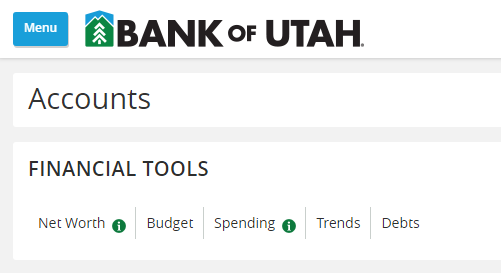As a lifelong book lover, I’ve always believed the middle of a story is where things start to take shape — and get interesting. Characters evolve, plotlines twist and big decisions are made. The direction a story takes in the middle often sets the tone for how everything ends, and that turning point is what gives the rest of the story its direction and heart.
The midpoint of a book is a natural time for readers to pause and reflect on the journey so far and what might lie ahead. As we near the midpoint of the year, it’s a fitting time to do the same with your finances: to check in, reflect on what’s resonated with you so far and think about what kind of ending you’re working toward. This moment offers a chance to step back and consider your financial story — what you’ve accomplished so far, what you’ve learned and where you’d like to go next.
Success at the end of the year doesn’t usually come from a big December push. It’s shaped by the everyday habits and small changes you make now. So let’s walk through a few things to check and some simple ways your bank — both its tools and its people — can help you turn the page with confidence.
Step 1: Check In on the Numbers That Matter
A mid-year money review doesn’t have to be complicated or stressful. Think of it as a plot check, an opportunity to make sure your financial story is still heading where you want it to go.
Start by asking yourself:
1. How does my current spending compare to my budget?
If you have a budget, pull it out and see how the year is tracking. If not, look at your recent statements — these are usually easy to find through online banking or your mobile banking app — to get a sense of your monthly spending. You can also use the financial tools section in online banking, which you'll sometimes hear us call My Money Hub, to view your expenses by category and spot trends at a glance. Are there categories that are creeping up? For example, maybe streaming services, dining out or impulse purchases have slowly increased.
You can also use the financial tools section in online banking, which you'll sometimes hear us call My Money Hub, to view your expenses by category and spot trends at a glance. Are there categories that are creeping up? For example, maybe streaming services, dining out or impulse purchases have slowly increased.
A few splurges are normal, but if you’re consistently overspending in one area, it might help to set a simple limit or swap in a lower-cost option. You might also find subscriptions you forgot about or realize you’re spending more than expected on groceries, especially with rising prices. For tips on managing food costs without sacrificing quality, check out our blog on smart grocery spending.
2. Am I making progress on paying down debt?
Take stock of what you owe on credit cards, car loans or personal loans. Have your balances gone down? If not, could you automate an extra payment each month or consolidate higher-interest debt? Even an additional $50 a month toward your principal balance can make a big dent over time.
3. Have I added to my emergency savings?
Life happens. Having a cushion can make a huge difference. Whether you’re building up to that three-month safety net or just trying to put away a few hundred dollars, now’s a great time to check in. If you received a tax refund or bonus earlier this year, did you save part of it? If not, can you start a small recurring transfer now?
4. Am I on track for my savings goals?
Whether it’s a family vacation, back-to-school shopping or holiday gifts, those seasonal expenses will sneak up faster than you think. Estimate what you'll need and divide by the number of months left in the year to figure out your monthly savings goal. If you need $600 by December, that’s $100 a month starting in July.
5. Do I know my credit score and what might impact it?
You are entitled by law to a free credit report from each of the credit bureaus —Experian, Equifax and TransUnion — once a year. You can request these reports at www.annualcreditreport.com. These can help you track your credit over time and understand what may be affecting it. For example, keeping your credit utilization under 30 percent of your available credit can have a positive impact on your overall credit health. For more tips on building and maintaining a strong score, check out our blog on understanding your credit score.
Step 2: Revisit Your Goals and Adjust If Needed
Your goals from January may not match your reality by mid-year, and that’s completely normal. Stories change as they unfold, and so do our lives. Maybe you started a new job, had unexpected medical bills or made a big move. Instead of feeling behind, think of this as a plot twist, a moment to realign and shape where the next chapter is headed. Ask yourself:
- Are the goals I set earlier this year still the right ones for me?
- Has my income or spending changed in a way that should affect my plan?
- Are there new priorities I want to add, such as saving for a wedding, updating the house or setting aside funds for a child’s extracurriculars?
Even small tweaks can make a difference. For instance, if you originally planned to save $5,000 this year and you're not quite there, that’s OK. You don’t have to give up on your goal, just adjust it. Maybe $3,000 feels more doable now. What matters most is that you’re still moving forward, even if the pace has changed. Every bit of progress counts.
Step 3: Use Your Banking Tools to Stay on Track
This is where your bank can really be a partner, like a trusted co-author helping you shape the next chapters of your financial story. Whether you prefer the convenience of digital tools or the personal touch of talking to a banker, you’ve got options.
As mentioned earlier, the financial tools section in online banking brings a variety of helpful features together in one place. With those tools and others, as well as support from your local team, you can:
- Use alerts to stay aware of spending. Notifications for large transactions, low balances or upcoming bills can act as helpful nudges to keep you in control.
- Track your spending habits using built-in tools available in most online and mobile banking platforms. These features typically let you categorize expenses, set monthly limits and spot areas where you might want to cut back.
- Create custom savings goals. Set a goal (like $2,000 for holiday shopping or $1,500 for back-to-school expenses) and track your progress visually.
- Review your net worth and cash flow. See a real-time snapshot of where you stand. Look at what’s coming in, what’s going out and how your financial picture is shaping up.
- Make your money work harder. Your savings strategy should work for your goals and your lifestyle. You might consider exploring accounts with competitive rates, CDs for added flexibility or HSAs if you have a high-deductible health plan.
- Automate your goals. Set up recurring transfers to a savings account or money market account, making it easier to build momentum over time. Bank of Utah also offers a Super Saver CD, a unique option that lets you add funds as you go, helping turn small deposits into something bigger. It’s amazing how quickly it adds up when saving becomes part of your routine.
- Reach out for guidance. You don’t have to figure it out alone. A quick conversation could help you clarify your next steps, whether it’s figuring out which account to open, discussing financing options or finding ways to manage debt.
Start Now, Thank Yourself Later
A mid-year financial check-in may seem small, but it can be a meaningful pause in your story — a chance to reflect, make intentional choices and set the tone for what’s ahead. It doesn’t have to take long, but it can help shape the tone for the rest of your year. Give yourself 30 to 60 minutes this week to reflect on what’s going well, what needs attention and one or two changes you want to carry into the next chapter.
If you’d like a little support along the way, Bank of Utah is here. Whether you stop by a branch or call one of our team members, we’re happy to help you plan your next step.

Tiffanie Chapman began her banking career as a customer service representative at Bank of Utah’s Sandy location in 2021 and was promoted to banking manager in October 2023. Originally from Oregon, she enjoys exploring Utah’s scenic trails, reading, playing basketball and spending time with her family. Her goals include starting a successful book club, traveling more and continuing to help clients reach their financial goals while serving her community.




